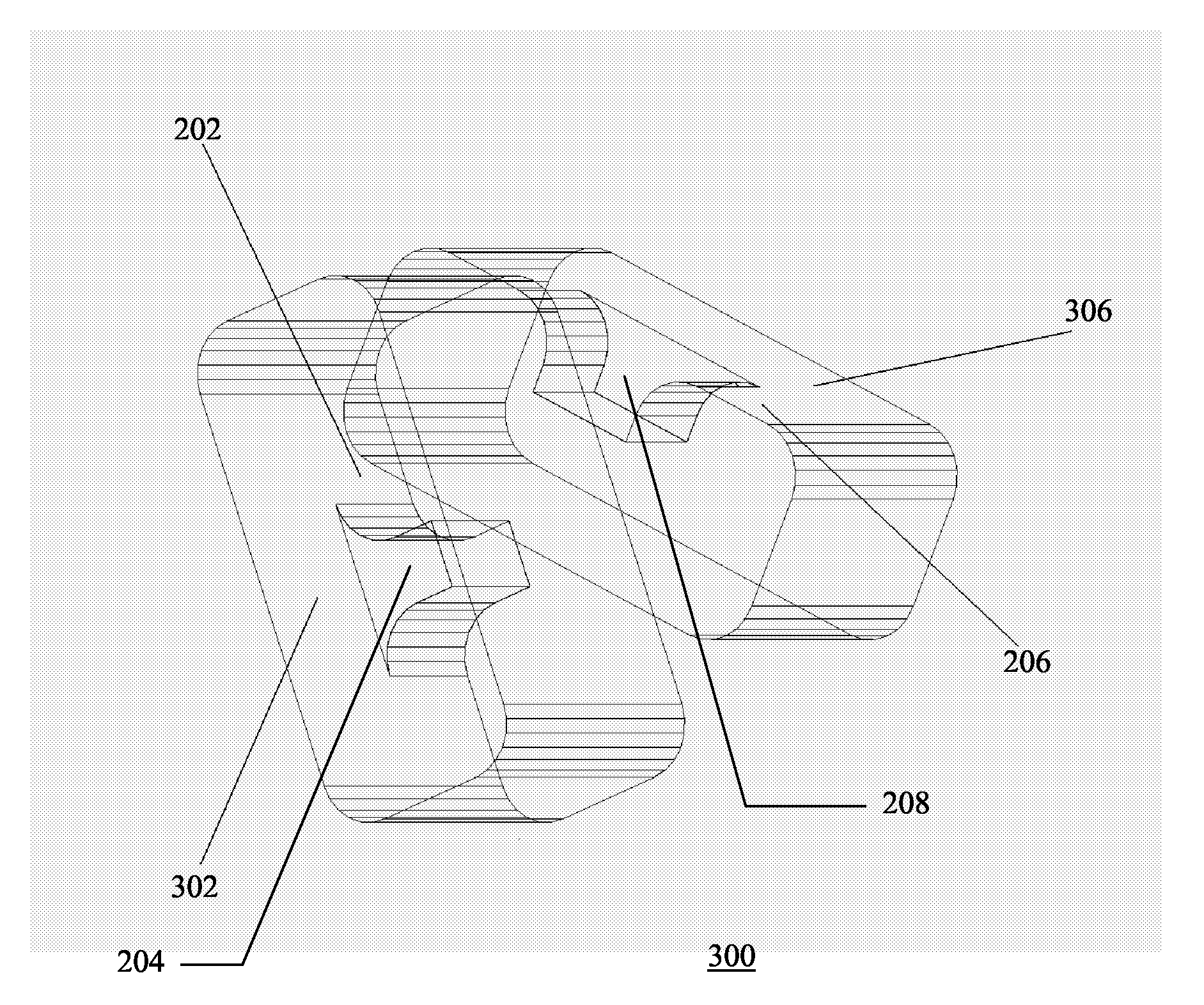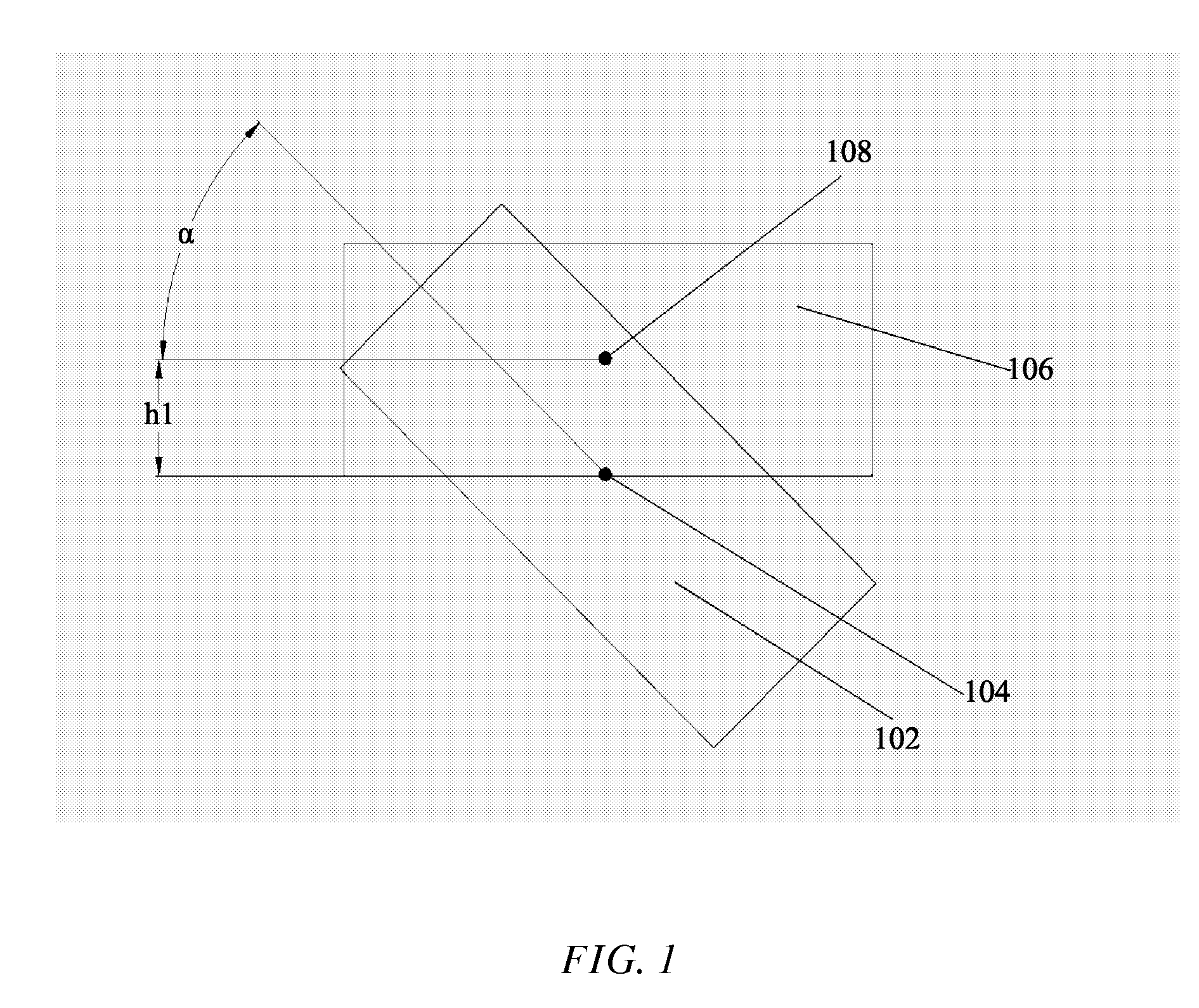Waveguide Junction
a technology of waveguides and junctions, applied in the field of waveguide junctions, can solve the problems of increasing manufacturing effort and expense, complex manufacturing of such junctions, and substantial limitations of achievable performance, and achieve the effects of convenient manufacturing, high performance properties, and compact siz
- Summary
- Abstract
- Description
- Claims
- Application Information
AI Technical Summary
Benefits of technology
Problems solved by technology
Method used
Image
Examples
Embodiment Construction
[0015]With reference to FIG. 2 and FIG. 3 a junction 300 for connecting two waveguides is presented. For the sake of clarity the drawings present the invention in a very schematic way with elements and lines not essential for understanding the invention omitted.
[0016]FIG. 1 shows the cross sections of two waveguides to be interconnected and their cross sections exhibit angular, α, and a first linear offset h1. The interconnection, to be effective, must ensure low reflections in the desired operating frequency band. In the shown example, the center axis of the first waveguide is located at the bottom broad wall of the second waveguide and the cross sections of the waveguides exhibit a 45° angular alignment to each other. In alternative embodiments the angular offset can be also below or above 45° and the linear offset can be such that the center axis of the first waveguide is not located on the broad wall of the second waveguide.
[0017]One embodiment of the novel waveguide twist accor...
PUM
 Login to View More
Login to View More Abstract
Description
Claims
Application Information
 Login to View More
Login to View More - R&D
- Intellectual Property
- Life Sciences
- Materials
- Tech Scout
- Unparalleled Data Quality
- Higher Quality Content
- 60% Fewer Hallucinations
Browse by: Latest US Patents, China's latest patents, Technical Efficacy Thesaurus, Application Domain, Technology Topic, Popular Technical Reports.
© 2025 PatSnap. All rights reserved.Legal|Privacy policy|Modern Slavery Act Transparency Statement|Sitemap|About US| Contact US: help@patsnap.com



